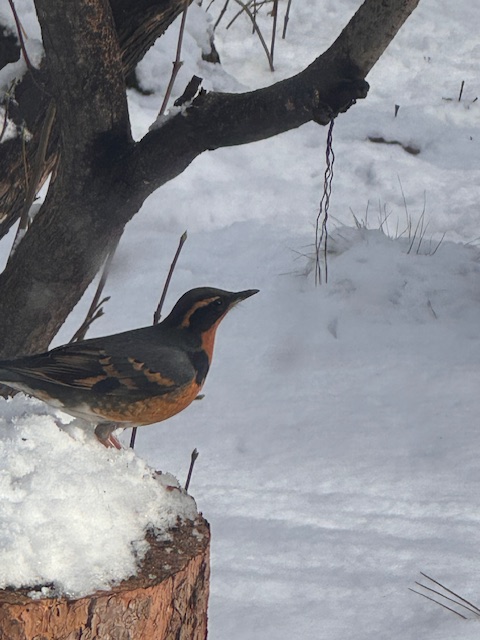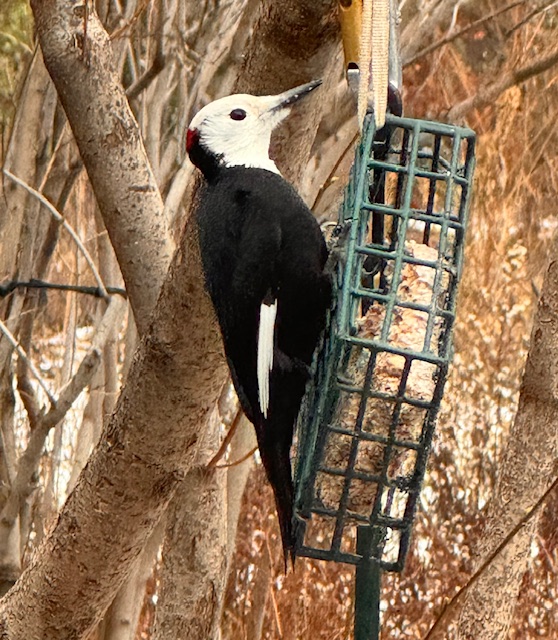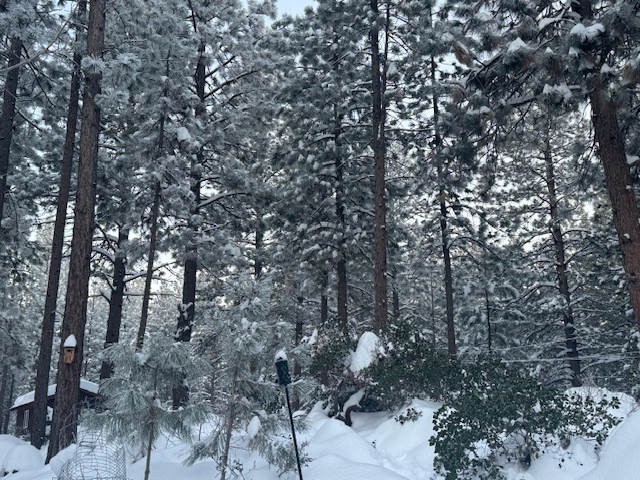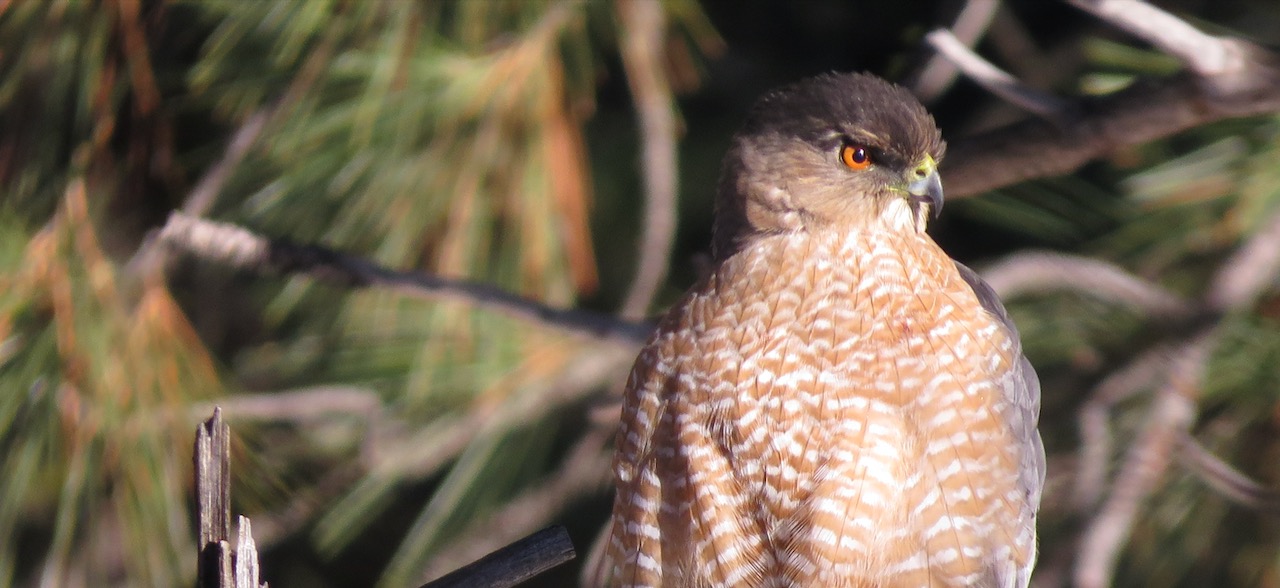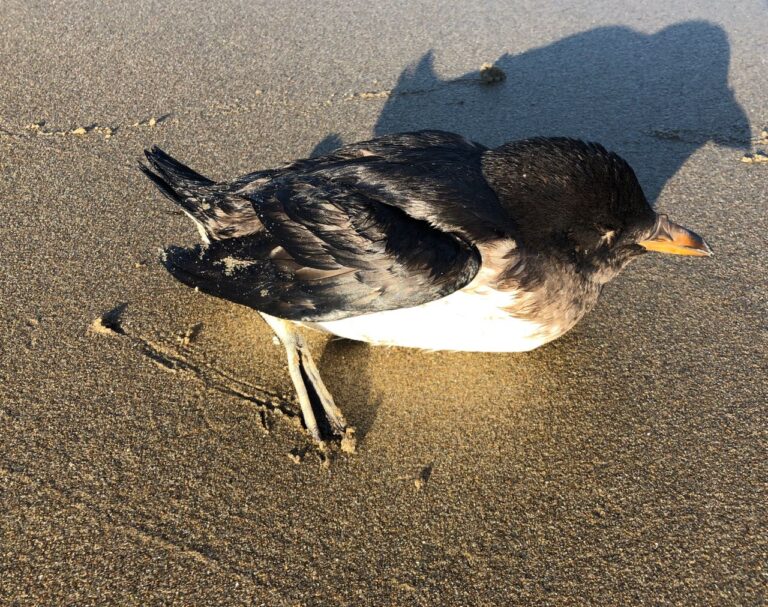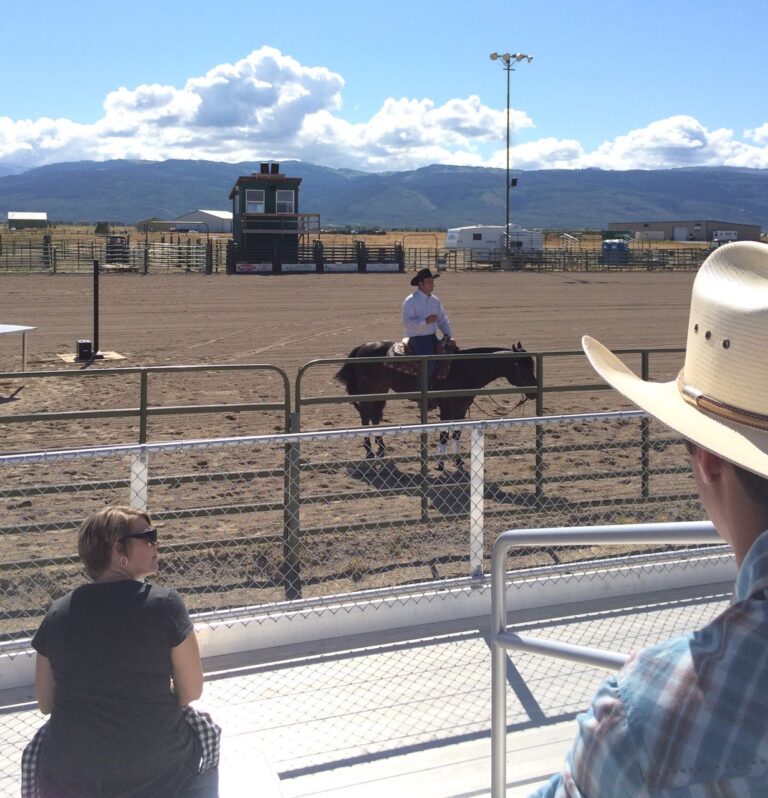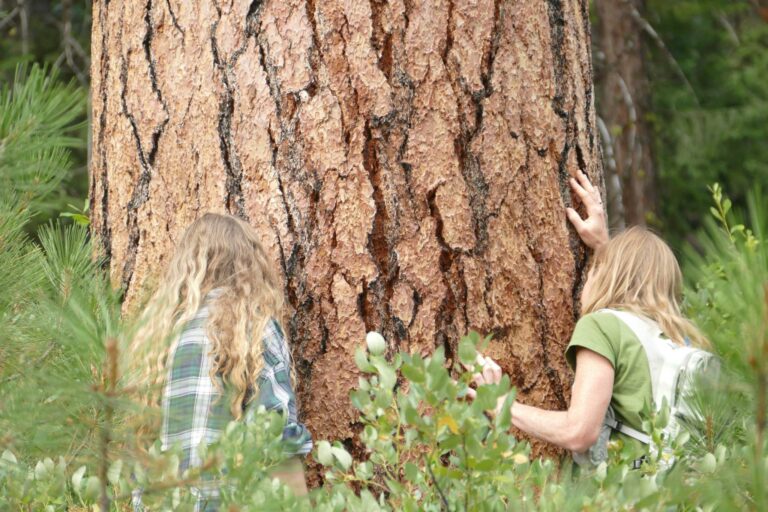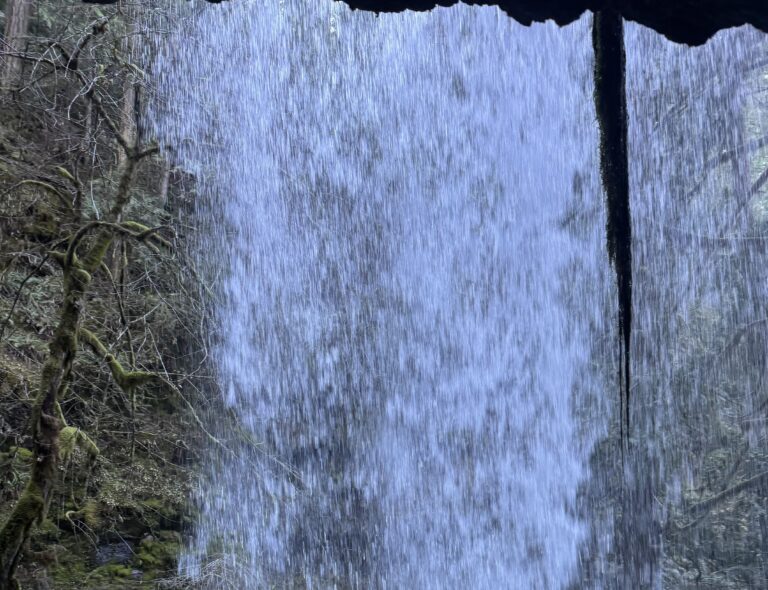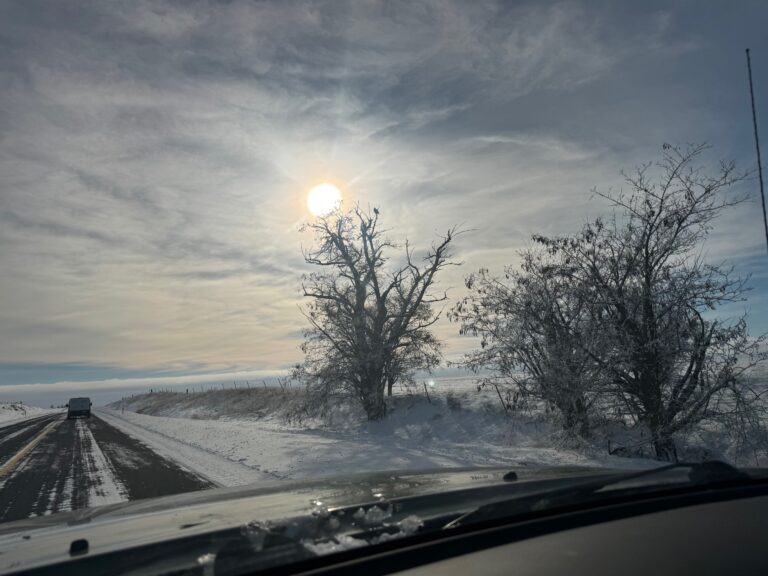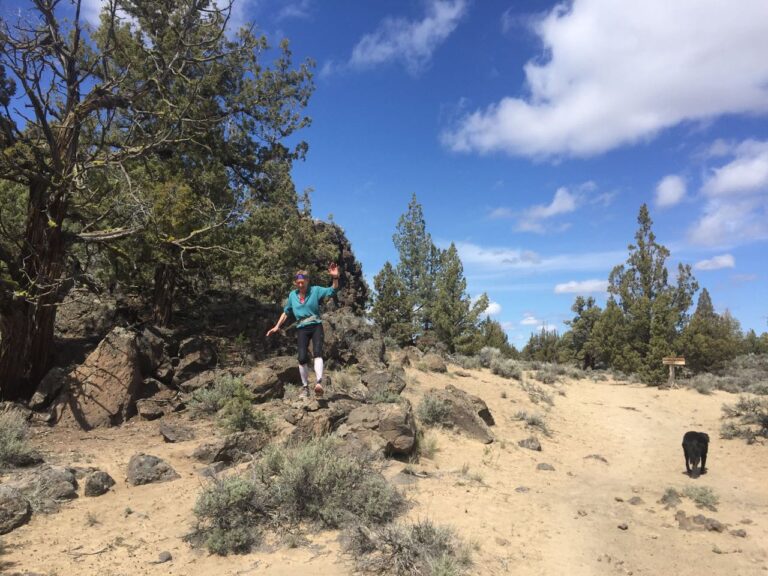Welcoming a Cooper’s Hawk to our Yard
The Cooper’s Hawk wings in for a landing, long barred tail fanned wide. Seconds before, all songbirds vanished. I watch through the window. Starstruck. Dazzled by predatory prowess.
A jaunty gray cap belies the intent gleam of amber eyes and a curved bill adept at tearing flesh. Downy chest feathers form a rippling pattern like snow on a wheat field. Seconds later, the hawk lifts and flies to the forest edge about 20 yards away. A small dead pine tree with an ideal horizontal branch is the perfect vantage point overlooking our snowy front yard.
Patience. Stillness, except for an occasional head swivel. Balanced on one bright yellow foot, the hawk tucks up the other under feathers for warmth. A raft of sunlight spotlights the hawk. Grabbing my trusty old Canon Powershot, I check my shutter speed setting, and crack open the front door. The hawk does not move. I take a few cautious steps. Click. Click. Gratitude. Slow walk back inside to my window watch.
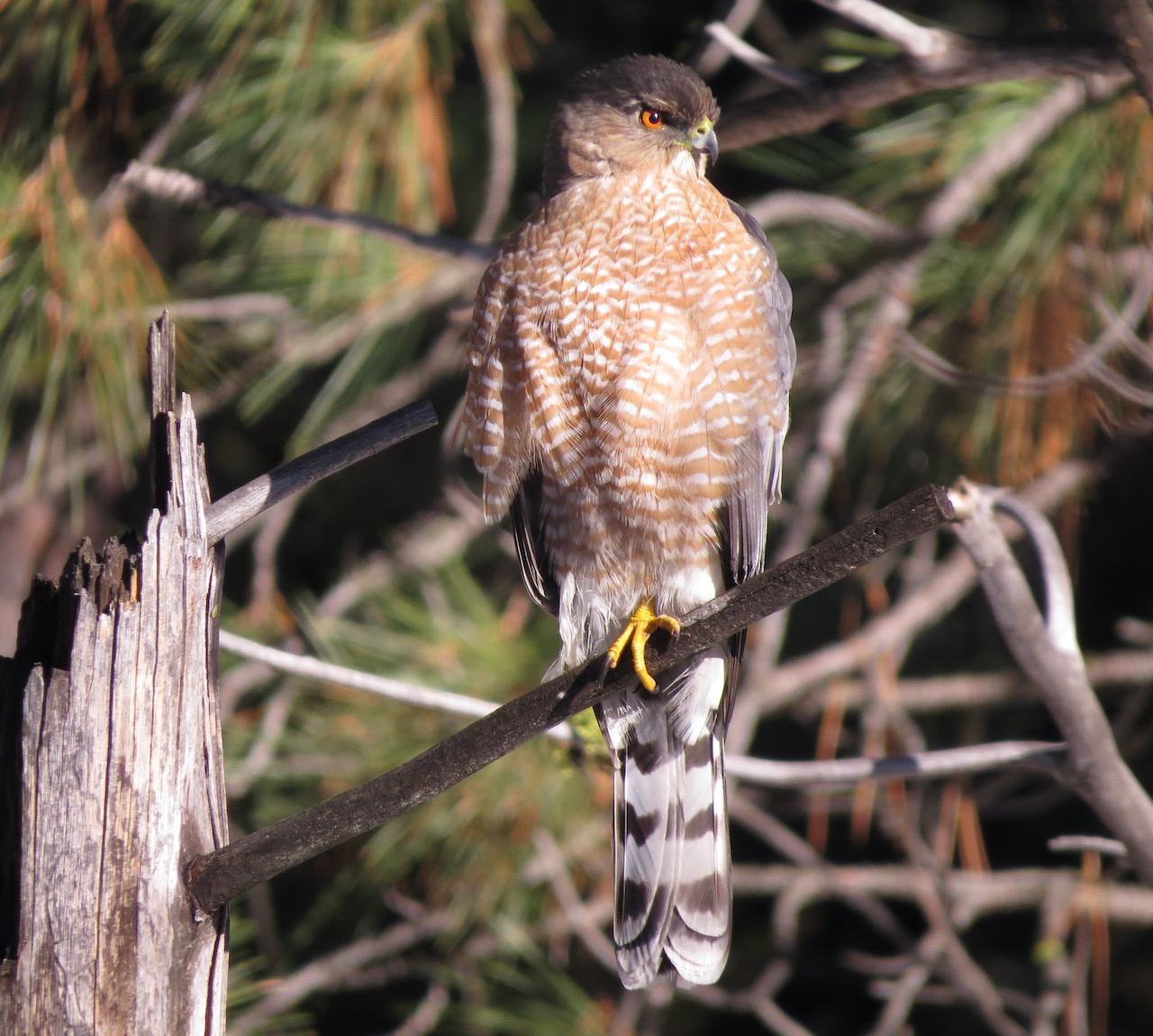
The first birds to come within that laser-sharp gaze are two Mountain Chickadees landing in the leafless lilac bearing two bird feeders. Brazen as always. These are the birds that stay put when I refill the feeders. Within five minutes, the entire gathering reconvenes in the lilac and plum tree– Lesser Goldfinches, Pygmy Nuthatches, Dark-headed Juncos, House Finches, and one Varied Thrush. The Cooper’s Hawk waits.
Twenty minutes pass before I sense a restlessness, a bit more head-turning, the better to see. A sense of tension. Launching, the hawk flaps across our yard–over manzanitas, ceanothus, and the last bent stalks of sunflowers and goldenrods in snow. I watch the merging of bird into spruce, the night roost for the flock of California Quail. The songbirds vaporized while my eyes tracked the star of the show.
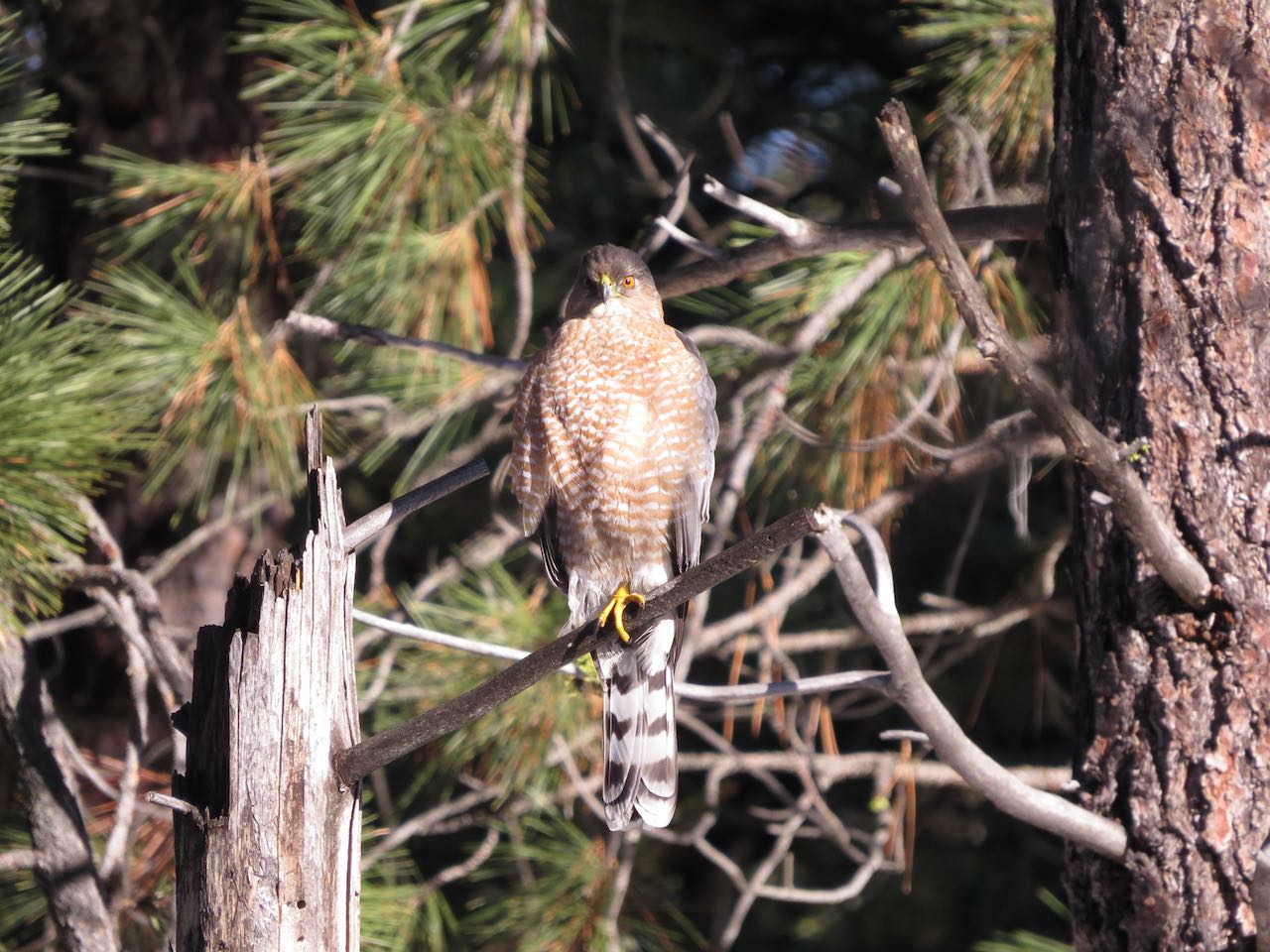
Walking the driveway, I scan the dense spruce limbs without luck. Lesser Goldfinches sing their searing songs from treetops. I listen to the chickadees calling in complex patterns that I know are more detailed than the human ear can hear. All seems copacetic. I’m not hearing alarm or mobbing calls when a few chick-a-dee-dee calls turn into a rapid-fire string of dee-dee-dee-dees! The more dees, the greater the threat. Pygmy Owls top the list for highest level of alert. Not much bigger than a songbird, this day-hunting owl may look like one of those cute round bird toys, but not so.
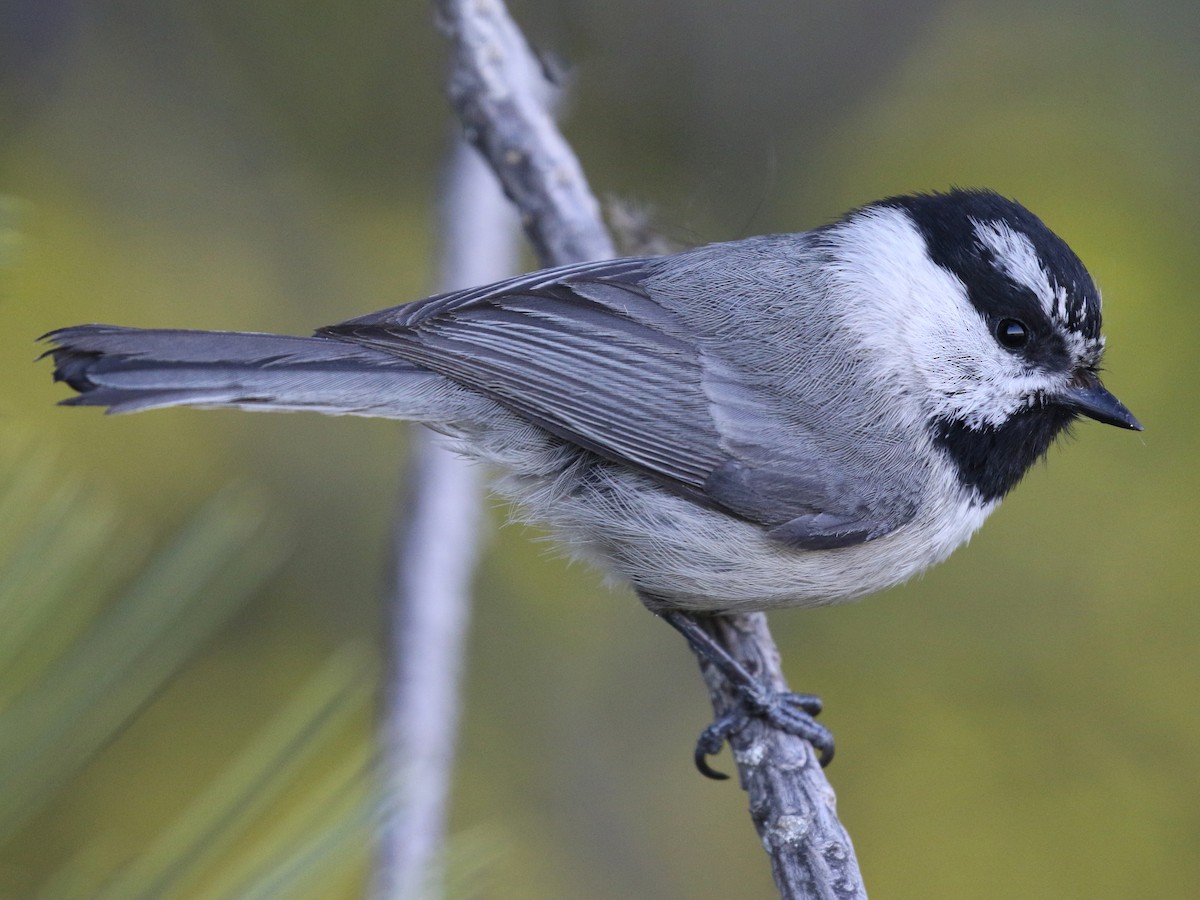
Once, Wes witnessed a Pygmy Owl snatch a junco from the ground and fly off. He told me the junco gave one last squeak. Ouch. Okay, that’s sad even as I revere all birds of prey and the adage “everything must eat.” I missed the moment, but I did take a photo of a Pygmy Owl splashing in the bird bath of a former yard in Missoula about a decade ago. (I can’t resist posting even if a bit fuzzy).
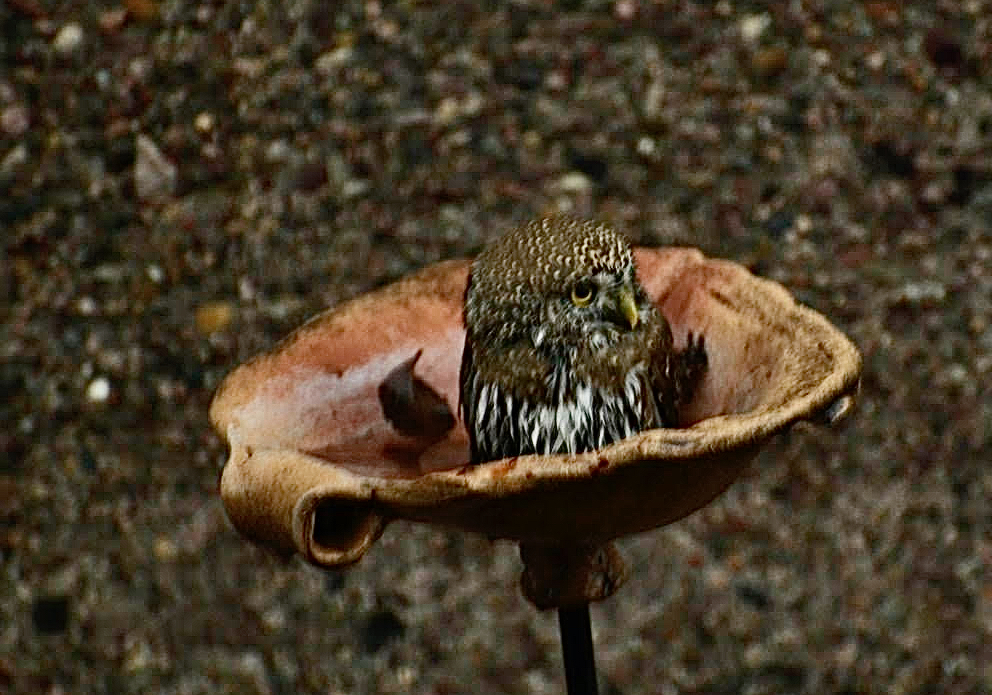
Some bird lovers bemoan Cooper’s, Sharp-Shinned Hawks, Merlins, and Pygmy Owls drawn to yards in winter for the songbird congregations at bird feeders. Not me. I celebrate all native bird predators (and rebuke outdoor domestic cats killing 2.4 billion birds a year in the US alone).
Predator-prey relationships evolved over the millennia. Ecosystems with healthy numbers of native predators are healthier, wilder, and more resilient to the buffeting threats of climate change. Predatory ways are deeply embedded in the fabric of nature’s cycle of death and renewal.
Besides, it’s not easy being an accipiter, the name for forest hawks with rounded wings for slaloming through trees and long tails for steering. So often, I’ve witnessed a Cooper’s Hawk or Sharp-Shinned Hawk flying off empty-taloned. Add in a century of horrendous shooting of hawks and eagles before 1972 when finally protected under the Migratory Bird Treaty Act, and we have much to do to make amends.
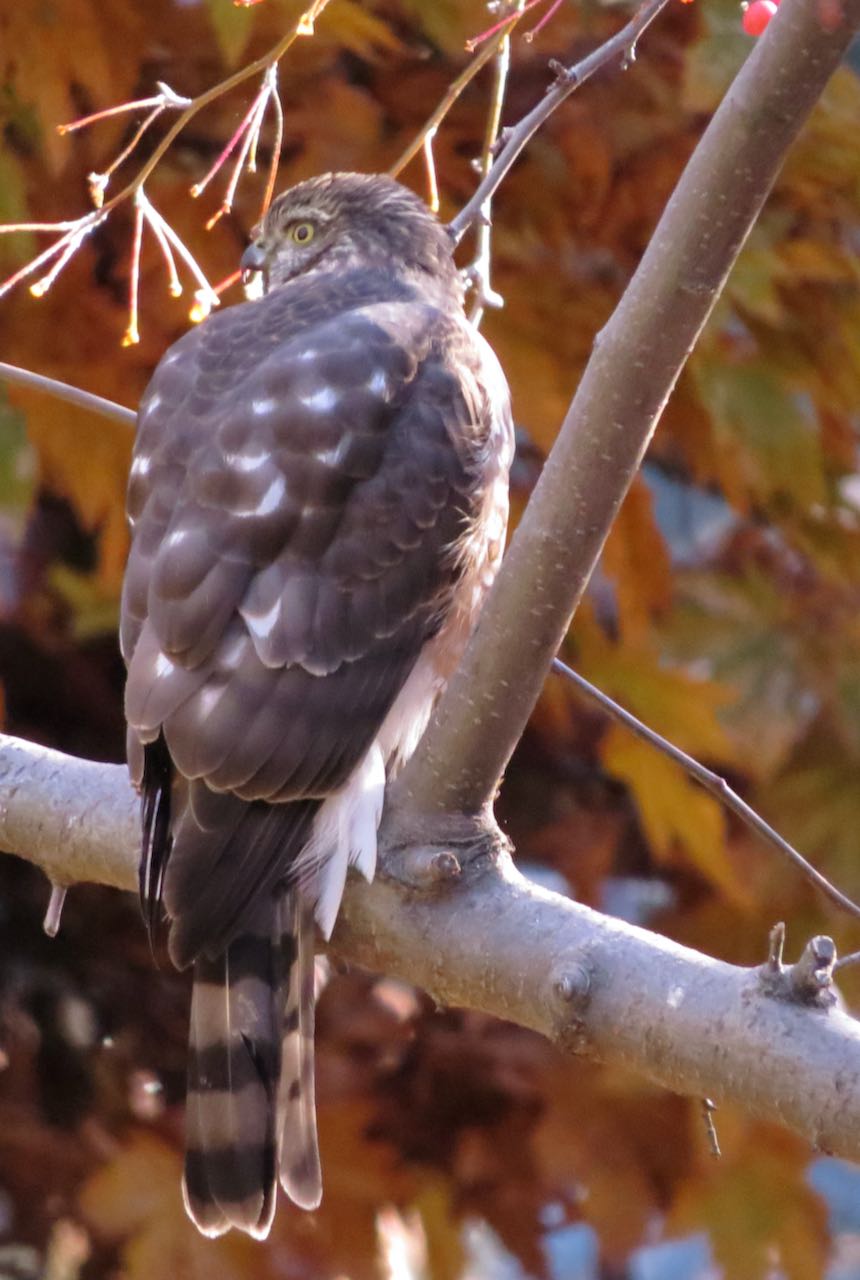
For all who delight in feeding wild birds in winter, our focus ought to be on providing natural cover for songbirds–trees, bushes, dead trees with nesting and roosting holes (thanks to woodpeckers), logs, boulders, and brush piles. Shift our perspective of beauty. Resist the impulse in fall to rake leaves, cut stalks, and tidy up–leave it all for the insects, for seeds, and cover. Give songbirds more ways to elude predators.
When it comes to birdfeeders, clean them regularly. Provide water for drinking and bathing–but change the water daily. If you have a cat, be a champion by keeping your pet indoors–safer for the birds and safer for your feline friend.
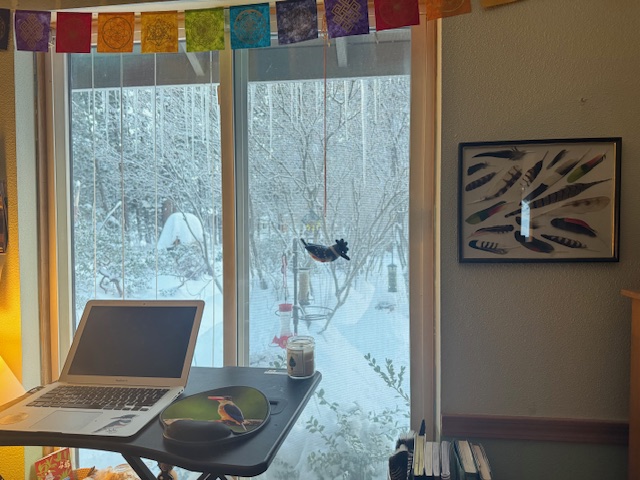
I realize I’m praising the Cooper’s Hawk coming to our yard on the heels of my last blog lamenting the death of a sparrow. As I drove home from Missoula on a snow-lined highway, a flock lifted in front of me and one could not veer away in time. That’s different as an action outside of nature’s long-held cycles–an impact of our industrialization of the planet, and my participation.
What is it then to participate in ways of amends, gratitude, and true reciprocity–giving back far more than we take? I believe we must be activists on behalf of birds and their vital habitats–locally, nationally, and globally.
In that spirit of advocacy, I offer two actions before February 2nd. Both policies will have tremendous consequences for birds and the habitats they depend upon. Both are directed to the U.S. Forest Service. Start by signing this petition in favor of stronger protections for all old-growth forests and including mature forests that will become the ancient forests of the future. Then, write your own comment–even if short. That’s the most effective way to be heard.
Next, comment on the Northwest Forest Plan Amendment. Tell the Forest Service that the plan should be strengthened and not weakened.
For both comments, be personal and add your observations of where birds thrive in forests. For ideas, see my blog on what makes a forest whole –an observation of nesting Lewis’s Woodpeckers. Don’t be afraid to use the word love.
Thank you. Time to heed the raven giving a series of urgent calls from the top of a pine. I’m pulling on my boots and heading out.
“I only went out for a walk and finally concluded to stay out till sundown, for going out, I found, was really going in.” – John Muir
